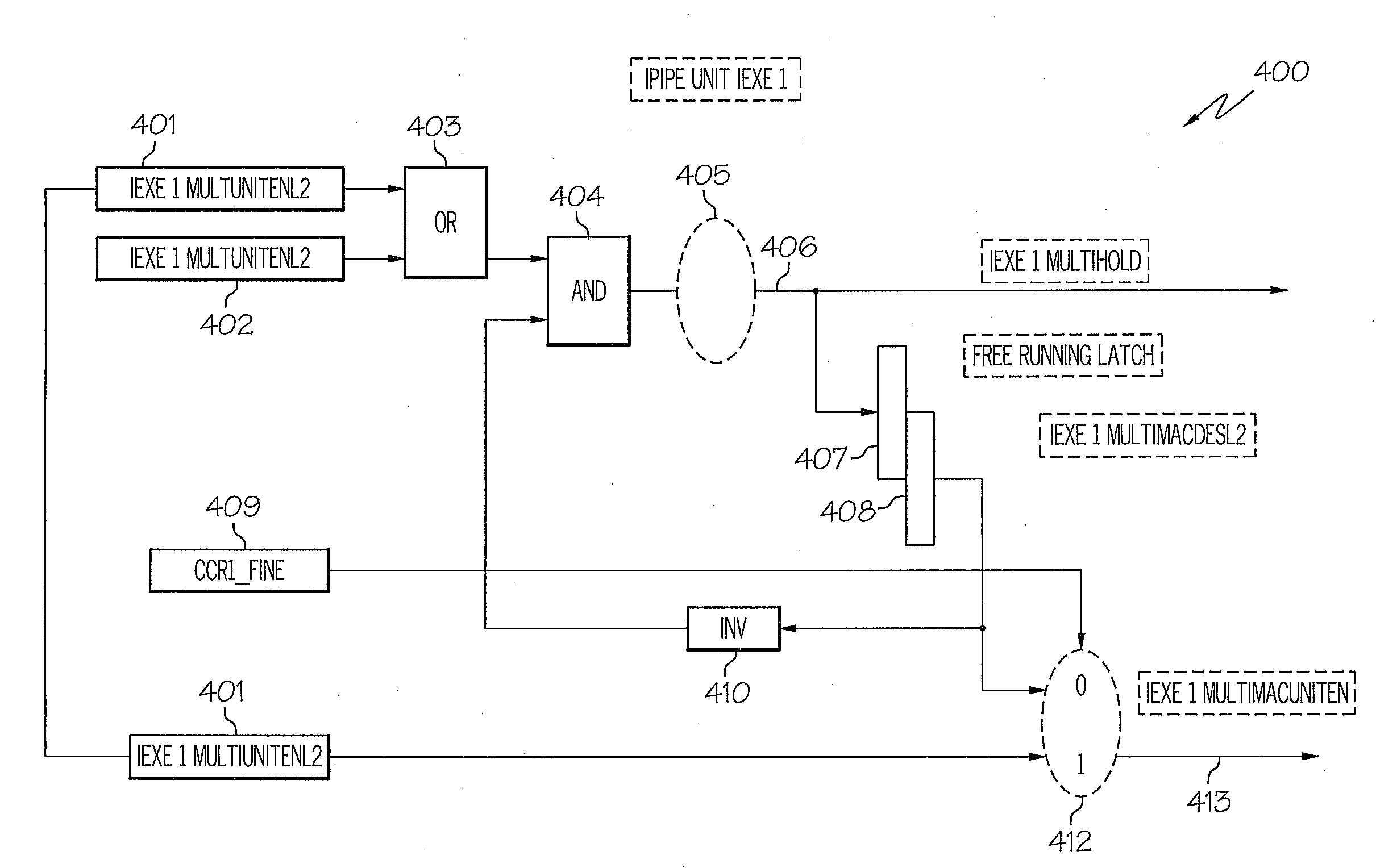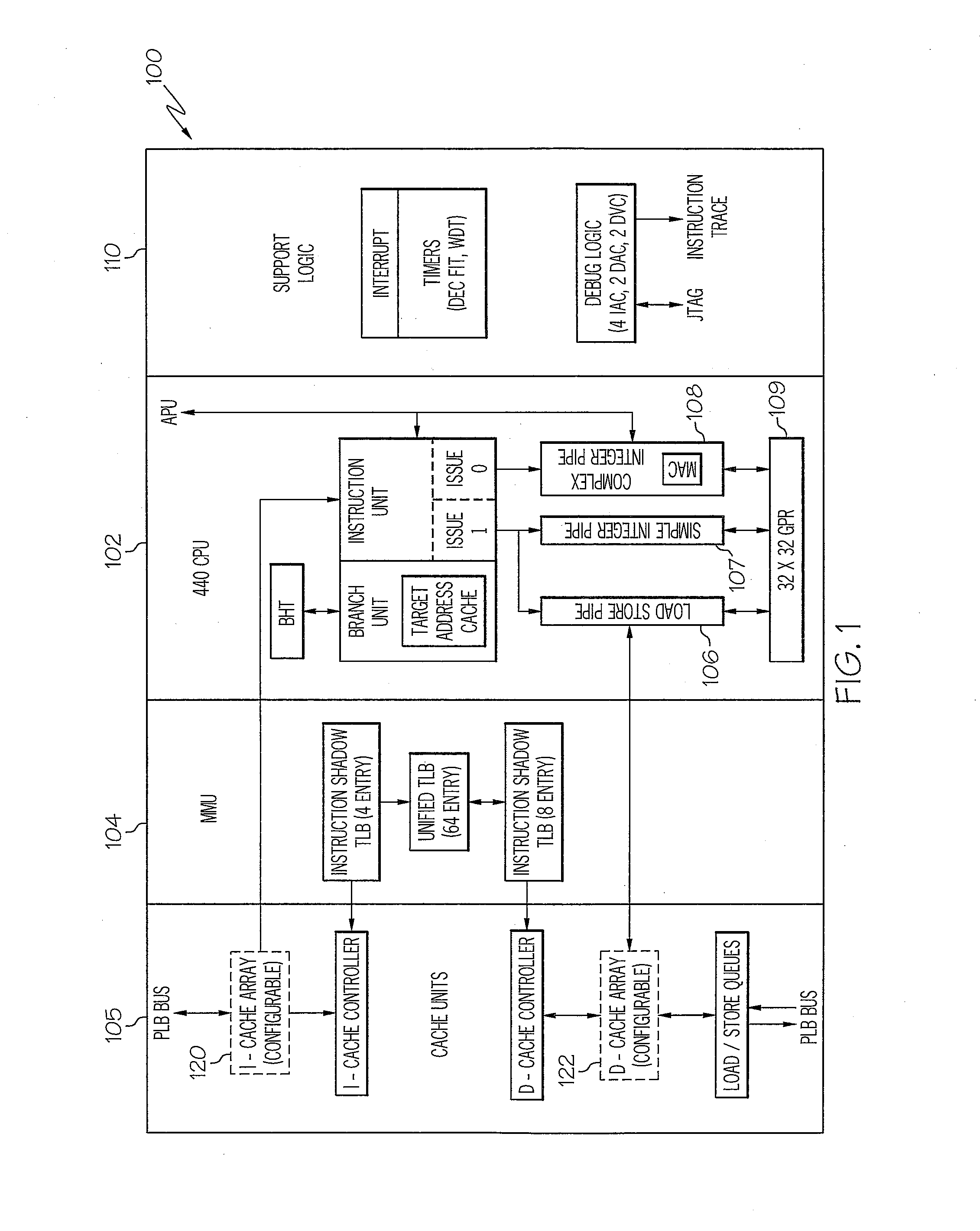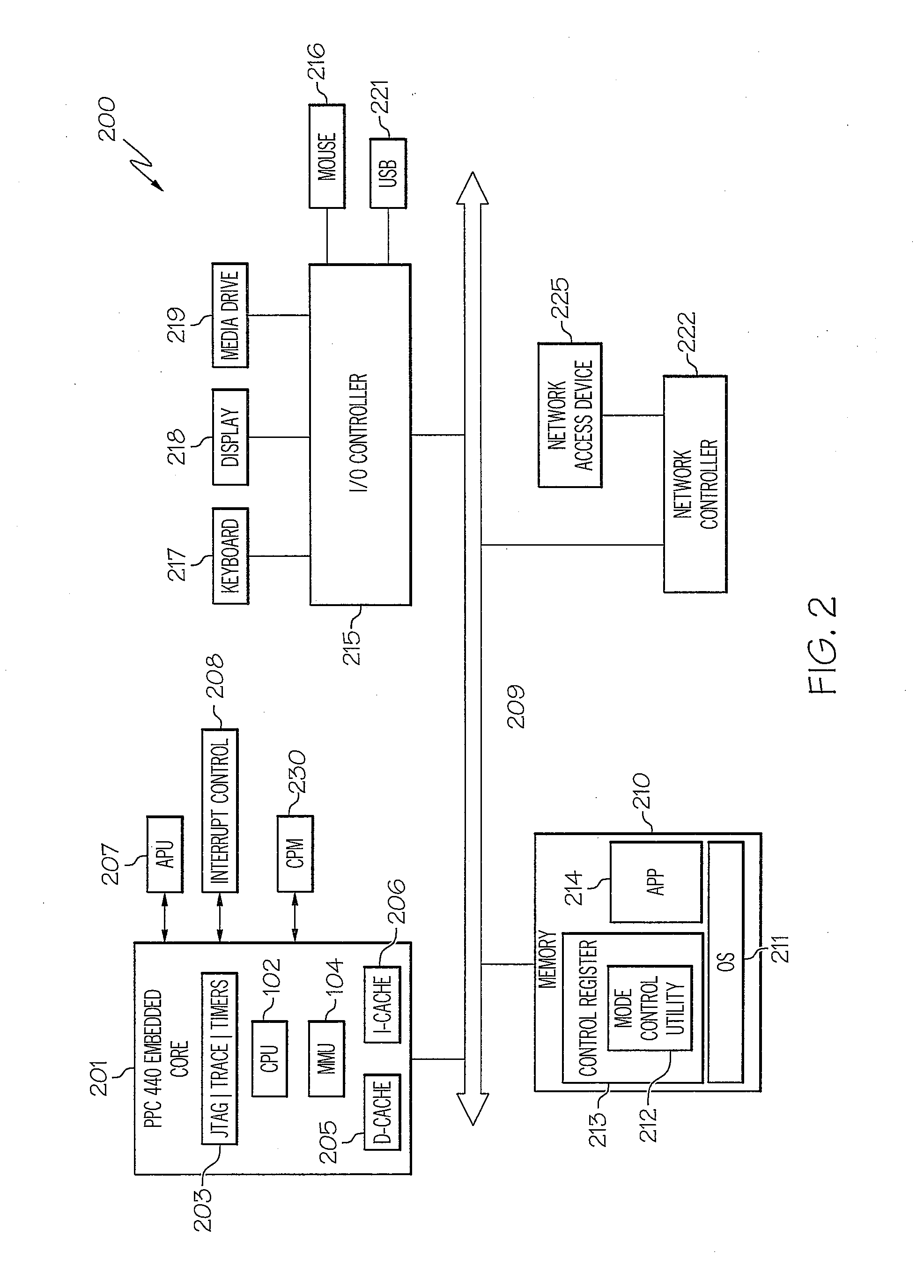Adaptive execution frequency control method for enhanced instruction throughput
- Summary
- Abstract
- Description
- Claims
- Application Information
AI Technical Summary
Benefits of technology
Problems solved by technology
Method used
Image
Examples
Embodiment Construction
[0010]Disclosed is a method, system and computer program product for improving the throughput of a processor when executing frequency limiting operations (such as a sequence of multiple instructions) by adaptively and selectively controlling the execution frequency of functional units in the processor. In a first embodiment, a processor-level (frequency) control system selectively changes the processor's (clock) frequency for various arithmetic and logical operations, which are traditionally frequency limiting operations (i.e., cause a measurable slow down of the processor frequency). The processor-level frequency control system provides a utility or logic that monitors complied execution code and recognizes when a sequence of particular-type instructions / operations, such as a pre-set number of multiply operations, for example, are queued up for execution by the processor. The frequency control system dynamically adjusts the frequency of the processor from a higher (normal) frequenc...
PUM
 Login to View More
Login to View More Abstract
Description
Claims
Application Information
 Login to View More
Login to View More - R&D
- Intellectual Property
- Life Sciences
- Materials
- Tech Scout
- Unparalleled Data Quality
- Higher Quality Content
- 60% Fewer Hallucinations
Browse by: Latest US Patents, China's latest patents, Technical Efficacy Thesaurus, Application Domain, Technology Topic, Popular Technical Reports.
© 2025 PatSnap. All rights reserved.Legal|Privacy policy|Modern Slavery Act Transparency Statement|Sitemap|About US| Contact US: help@patsnap.com



